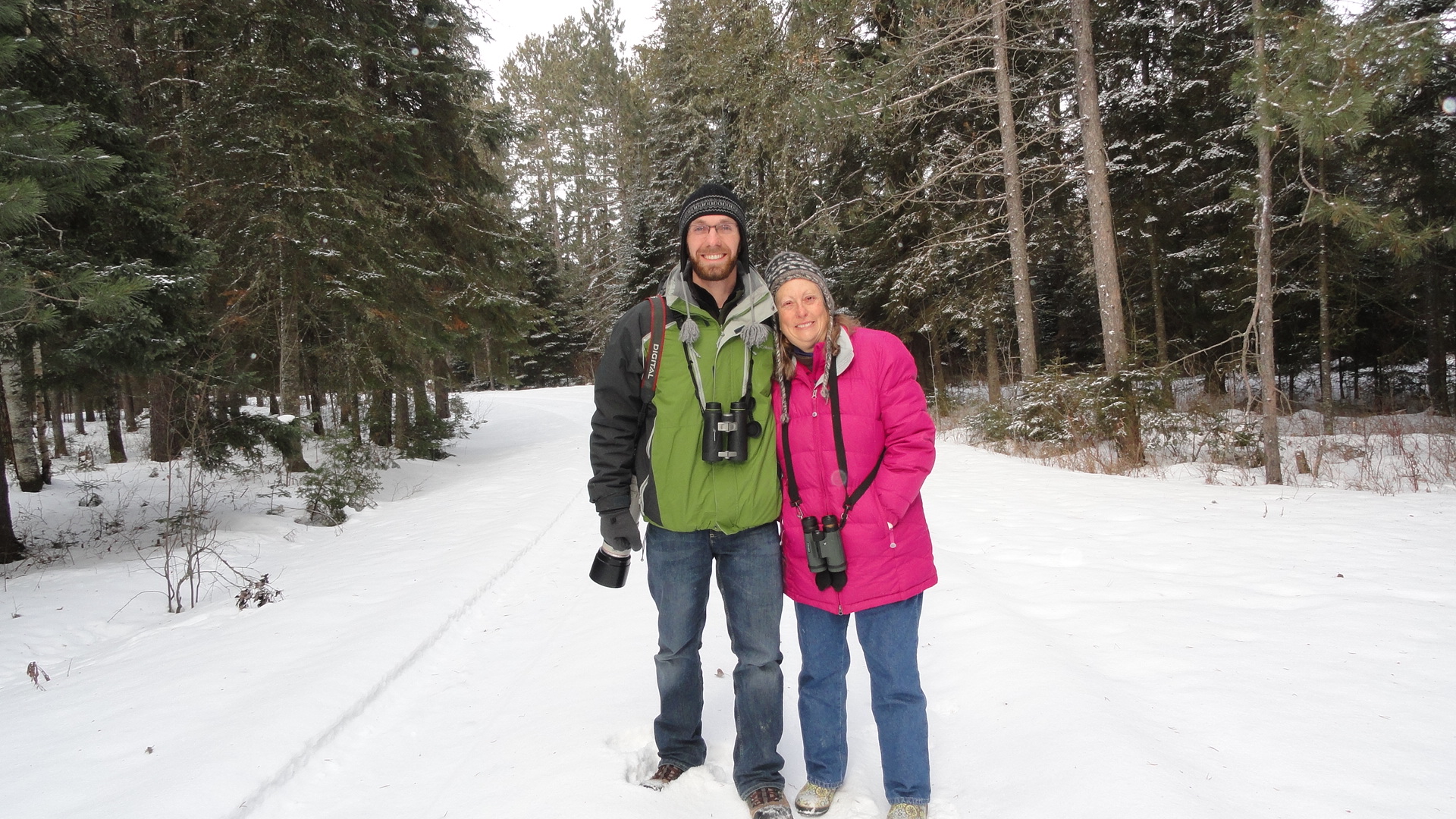It was wonderful to go birding in Minnesota again, a state that has now given me 17 life birds and some great adventures. I shared the trip with Diane Hoese, who I met birding in South Dakota with Doug Buri and Bob Janssen in 2010. Diane provided the inspiration for this blog; my first post was about attending Bob and Doug’s Shorebird Workshop with her. We both love learning from Bob, so we planned this trip around his Boreal Birding Workshop at the North House Folk School in Grand Marais.
Bob’s workshop took us to Judge CR Magney and Grand Portage state parks, Oberg Mountain, and nearby areas where we had great close-up views of 14 species of warblers.
We drove up the nearby Gunflint Trail by ourselves and found a few more birds, including this Olive-sided Flycatcher. This bird had huge white tufts on its lower back. Back home, I searched extensively and could not find any reference to a connection between the size of the tufts and gender, breeding status, or time of year.
After birding with Bob for two days, Diane and I set off to Ely to bird on our own for a day. The highlight there was breeding Cape May Warblers on territory. We found at least three pairs on our own, without playing recorded songs to draw the birds in, and enjoyed the peace of the boreal forest. The birds behaved as if we weren’t even there – males singing from the treetops, a lovely female working a spruce tree at nearly eye level. For me, birding does not get any better.
We also watched this Broad-winged Hawk attempt to catch an afternoon snack, but he missed his prey. Earlier in the day, we had watched a different Broad-winged being harassed by Blue Jays.
On our way south to Duluth the next day, we found a family of Gray Jays along Lake County Road 2, one adult and at least two adorable juveniles.
Next was birding with Erik Bruhnke in Sax Zim Bog. I had hoped to see a Connecticut Warbler, but it wasn’t meant to be. We did find a Yellow-bellied Flycatcher, though, which was one of my two life birds of the trip (the other was Alder Flycatcher). It was a lovely day that started with great views of a LeConte’s Sparrow and this goofy looking Sharp-tailed Grouse.
Erik showed me his beautiful photo of a male American Kestrel we had just watched together. He pointed out the white outer tail feathers with black bars. When I got home, I realized that I had also captured a clear shot of the bird’s tail showing this common trait that I’d never noticed before.
After a great dinner at Fitger’s in Duluth, we sadly sad goodbye to Erik and headed towards Diane’s home the next morning.
It was late afternoon and lightly raining when we arrived, but the birds were still coming to the feeders on Diane’s deck. I was happy to capture a shot of this male Hairy Woodpecker showing a characteristic that is usually not mentioned in field guides – the vertical black line through the red patch on the back of the head. Downy Woodpeckers do not have a line through the red patch.
My last birds of the trip were Diane’s lovely Baltimore Orioles.
Once again I had unintentionally taken the advice of my late husband, Burt. I’d saved something for next time. Now I’ve got both Connecticut Warbler and Boreal Owl to search for again. After a wonderful trip like this, the idea of going birding again in Minnesota sounds pretty good.
































